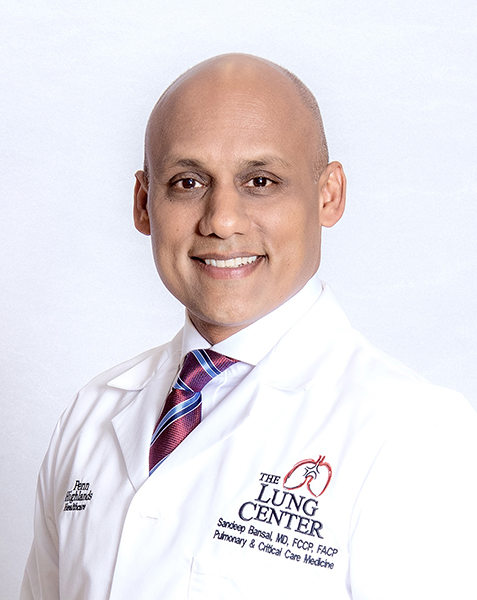
Bronchial Thermoplasty Gives Hope to Patients with Severe Asthma
It’s a chilly afternoon and Michelle Auman has a long walk to her car. Normally, that would mean two strikes against her. On this day, however, she walks confidentially out of the hospital and breathes in the cold air.
“It’s this. Things like this: walking outside, going from warm air to cold air,” she said. “I could never do this before.”
Auman, 42, has struggled with severe asthma for more than a decade. To her, walking distances more than a few feet or going from outdoors to indoors used to mean a sudden asthma attack, even an ambulance ride to the hospital. At the height of her struggle, she spent a month in the hospital with pneumonia and bronchitis. Some days, just getting dressed was a challenge, but what was most taxing was the way her asthma caused her to miss out on family milestones. Not only did she have to miss her 19-year-old son Bradley’s graduation due to hospitalization, but she also regularly missed out on being able to play outdoors with her 6-year-old son Mason.
That all changed when the Centre County resident was referred to interventional pulmonologist Dr. Sandeep Bansal, who was Pennsylvania’s first physician to perform Bronchial Thermoplasty, or BT, for severe asthma after it was approved by the FDA.
According to Bansal, medical director of The Lung Center and Intensive Care Services at Penn Highlands DuBois, BT is a minimally invasive, outpatient procedure that uses thermal energy to reduce the frequency and severity of asthma attacks in adults. BT makes it easier for patients to breathe by reducing the smooth-muscle tissue in the airways, creating room for easier airflow.
Treatment involves three separate outpatient procedures, each scheduled three weeks apart. Auman underwent her first treatment over Father’s Day weekend of 2017. She remembers the date well because, most notably, she was able to sit outside for a cookout without experiencing an asthma attack, even after just one treatment.
The results only got better.
“My biggest goal was to be able to walk down to the swing set and push my son on the swing,” she said. “In August, when I was able to do that, I stood there and cried.”
Three months post completing her treatment and Auman is feeling better than ever. She has lost 60 pounds thanks to diet, exercise and being able to eliminate one of the asthma medications that contributed to weight gain.
“Since I’ve had BT, I’ve been able to do a lot more – I can keep up with my 6-year-old now, whereas before it was: do I want to get out of bed this morning?” she said. “I don’t have to think, ‘OK, I can’t go here because people are smoking or because it will be too hot.’ Now I can do what I want.”
For Auman, doing what she wants is a welcome change.
“Michelle’s asthma was debilitating, and that’s why she was the perfect candidate for BT,” Bansal said. “She was taking multiple asthma medications but still experiencing asthma attacks, she had to adjust her life to avoid asthma triggers and she was struggling with daily activities due to her asthma.”
Patients who benefit from BT are typically adults between ages 18 and 65 who suffer from severe or persistent asthma that is not well-controlled by inhaled corticosteroids or long-acting bronchodilator medications. In addition, candidates are typically non-smokers or have minimal history of smoking.
According to Bansal, BT is proven to:
-
Reduce asthma attacks by 33 percent,
-
Reduce emergency department visits by 84 percent for respiratory-related symptoms,
-
And decrease the number of missed days of work, school or activity by 66 percent.
During the BT procedure, a bronchoscope – a long, flexible tube with a camera on the end – is inserted through the mouth or nose; no incisions are required. A smaller tube goes inside the bronchoscope and warms the airway smooth muscle to around 140 degrees Fahrenheit, which is cooler than a cup of coffee but warm enough to partially destroy the smooth muscle and, thus, limit the ability of the airways to narrow.
Patients are under sedation and should not feel any discomfort other than occasional coughing. After the procedure, patients are monitored closely and often go home the same day.
“Michelle’s results have been outstanding,” Bansal said. “Her story is inspiring and is a testament to the life-changing outcomes the BT treatment can offer to adults with severe asthma.”
Insurance coverage policies and payment vary by payer. The Lung Center team can help patients with the preauthorization process.
To determine if you are a candidate for bronchial thermoplasty, please contact The Lung Center at 814-375-3770.

